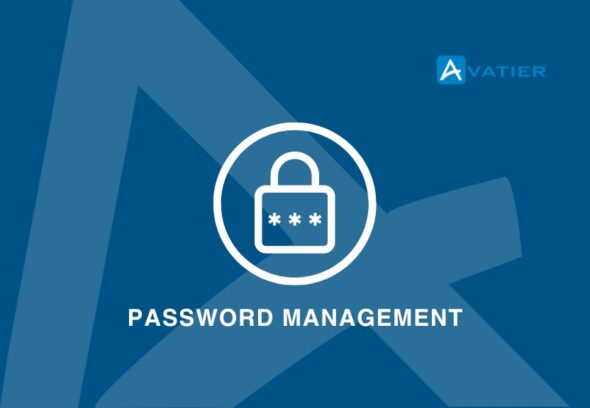Group Management implies that groups of users within the organization are created, managed, and rights are assigned to them. Due to the increasing complexity of business processes and the growing number of users and groups, manual group management is a slow and error-prone activity. This is the point where automation is applied.
Automation in Business Process Improvement
Automation has taken over the business world and it has become a game changer for the organizations. Automation of redundant and time-consuming tasks allows businesses to save time and resources, thereby, enabling employees to concentrate on more strategic and value-added activities. Automation also reduces mistakes and increases productivity which leads to the growth of the business in general.
With regard to group management, automation is capable of significantly simplifying the process. Using an automated solution, groups can easily be created and managed, permissions assigned and revoked and the right users gaining access to the right resources. This, apart from saving time, also reduces the likelihood of human errors and unauthorized access.
The Power of User Control in Self-Service Group Automation
Self-service group automation elevates group management to another level by allowing users to manage their own access and permissions. Via a self-service portal, users can ask for access to certain groups or resources, and the system will approve these requests automatically based on the predefined rules and policies. It eliminates the requirement of manual intervention by IT administrators and allows users to have the access they want immediately.
Automation of self-service groups also leads to user empowerment and accountability. Group memberships can be viewed by the users, changes or removals can be requested, and the status of the requests can be tracked. This is time-saving for the IT department and also makes people feel like they own and control their access rights. Moreover, self-service group automation enables organizations to assign group management tasks to business owners or department heads, hence, allowing them to control their teams themselves.
Characteristics To Be Considered In An Automation Tool For A Self-Service Group
However, there are several features that you should look for while choosing self-service group automation solution for your business to ensure its effectiveness and compatibility with your existing systems.
- The solution should have a self-service portal that is user-friendly as well as intuitive and that will enable the users to request access, view their group memberships and track the status of their requests. It should also offer a complete dashboard to the IT administrators to control and monitor all group related activities.
- The solution should be highly automated, allowing for automatic access provisioning and de-provisioning following the existing rules and policies. This will enable access rights to be assigned and removed promptly and accurately, thus minimizing the chances of unauthorized access.
- The integration to already existing systems is very important. Find an option that smoothly works with your Active Directory groups, enabling you to utilize your current user and group formations. This will make the process of implementation easier and it will be compatible with your existing infrastructure.
Finally, security is crucial. Ensure that the solution offers powerful access controls, audit trails, and compliance reporting features to protect the security and integrity of your group management processes.
Self-Service Group Automation integration with Active Directory Groups
Active Directory (AD) is one of the most popular directory services which centralizes information about resources and users in a database. Alignment of self-service group automation with Active Directory groups also boosts the efficiency and effectiveness of your group management processes.
Utilizing your current Active Directory groups, you can synchronize group information with the self-service portal, therefore, enabling users to have access to the right groups and resources. This thus eliminates the need to manage duplicate groups and guarantees uniformity across all your systems.
Self-service group automation integrated with Active Directory groups also allows automatic access provisioning and deprovisioning triggered by user role changes or group membership changes. This also makes certain that access rights are continuously updated and corresponded with the organization’s security policies.
Utilizing Self-Service Group Automation across Docker Container Environments
Docker has become a favored platform for developing, deploying, and running applications with containers. In the Docker container environment, handling the container and resource access is complex, especially when dealing with a lot of containers and users.
Docker container environment can be facilitated by self-service group automation of access management. The integration of the self-service portal with Docker enables users to ask for certain containers or resources and the automation system can verify and approve these requests automatically according to predefined rules and policies.
This not only saves time for IT administrators but also guarantees the required access to containers for users without affecting security. Using Docker container environments, self-service group automation can also facilitate access control policies, access activity monitoring and auditing, and security regulation compliance.
Conclusion: Self-Service Group Automation Power Embrace for Business Transformation.
Due to the highly competitive and rapidly changing business environment of today, organizations have to implement creative measures to remain in the leading positions. Self-service group automation is a revolutionary method of group management, which improves operations and gives more control to the users.
Group management tasks are automated, which saves time, reduces errors, and improves efficiency. Self-service group automation enables users to manage their access rights and this promotes responsibility and satisfaction of the user. Incorporating self-service group automation with Active Directory groups and Docker container environments improves its abilities and compatibility.
Choosing a solution with the right features, that integrated well with your existing systems and has a top priority of security is key to transforming your business and achieving the full power of self-service group automation. Book your self-service group automation solution demo today and see the benefits of simplified operations and user empowerment.




